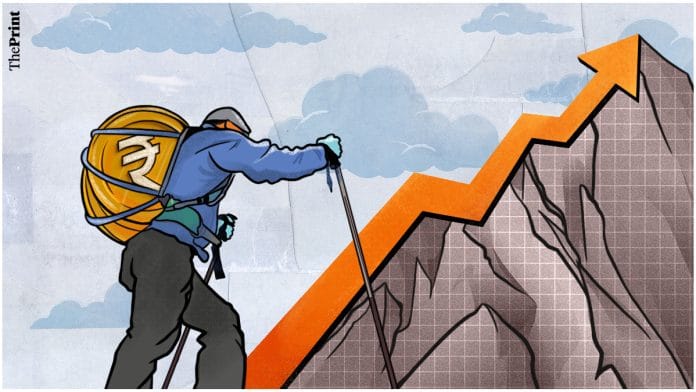The Reserve Bank of India’s (RBI’s) periodic surveys of consumer and business opinion are often more revealing than the broad macroeconomic numbers of growth, inflation, and the like.
In the latest set of survey findings, business and financial opinion reflects broadly the optimism of an expanding economy that is buttressed by good stability indicators and strong balance sheets. That’s true also of the economic forecasters who have been surveyed. This collective optimism as the economy heads into the busy festival season finds reflection in the latest set of macro numbers, like falling inflation, rising industrial production, lower unemployment, buoyant tax revenue, and good sectoral growth.
But one must not miss the nuances, or shading. Within industry, for instance, the manufacturing sub-set continues to lag. And there is no real indicator of acceleration. For instance, the capacity-utilisation percentage number in manufacturing continues to hover in the low 70s. That’s where it has been for most of the past seven or eight years (barring a sharp Covid dip). If significant investment in new capacity is supposed to kick in when capacity utilisation rises above this level, then we are not about to see that growth kicker.
This is confirmed by what manufacturers report on new orders. Growth in such orders (compared to a year earlier) has tapered off sharply over the past four quarters, from a handsome 40 percent to near-zero in the April-June quarter. Oddly, despite this manifest lack of buoyancy, the business expectations index (at 135.4) is at its highest point since the starting point of the data, in 2015-16.
The parallel findings of consumer surveys also reflect a less than optimistic mood. To be sure, assessments of the “current general economic situation” have been improving steadily over the last couple of years, but the index remains no higher than in late 2019, when the economic slowdown set in.
Those who think that their situation has worsened continue to outnumber those who report improvement in their current situation, albeit by a reducing margin. On employment too, those who see deterioration continue to outnumber those who see improvement; again, by a reducing margin.
Also read: Happenstance or manufacturing prowess? How China reached pole position in key businesses of future
The biggest concern is inflation, with more than 80 percent saying the rate of price increase is accelerating. Nor is there much hope that prices will come under control in the year ahead.
Consumers report that their spending has increased, but on essential items. Spending on non-essentials has decreased, on balance. On the positive side, the negative drift of consumer opinion is becoming less so from one bimonthly survey to the next; while many people find their situation difficult, they are a progressively smaller part of the total.
Also, as it has been for some time, the optimism with regard to the future remains undimmed; future expectations in almost all cases score better than the current situation.
Some other nuances bear comment. While the employment situation has improved, that is largely because the ranks of the self-employed have swelled even as the numbers in salaried jobs have come down. This could mean that the “self-employed” category is a labour sink that absorbs those who can’t find regular salaried work, or even casual labour, and who are, therefore, forced to fall back on their own devices. If so, the improvement in employment numbers could be deceptive.
The other number widely commented on is that, within the healthy growth of bank lending, the greatest increase has been in retail and personal loans. This may well be because many companies are cash-rich and do not need to borrow, while more consumers than before feel confident enough about their future income stream to finance the acquisition of assets (vehicles and residential units, mostly) with debt.
The RBI has done well to warn that this skewed lending pattern needs to be watched for risks as household indebtedness climbs.
The overall picture of the economy is, therefore, painted in broadly optimistic hues, with some contrapuntal colours a part of the mosaic. The economy is, therefore, chugging along at the “new-old normal” growth rate of 6-plus percent. That’s great, given the global context, but there’s no near-term prospect of acceleration.
By special arrangement with Business Standard.
Also read: Taming Big Tech: Battles against them have reached a defining moment






